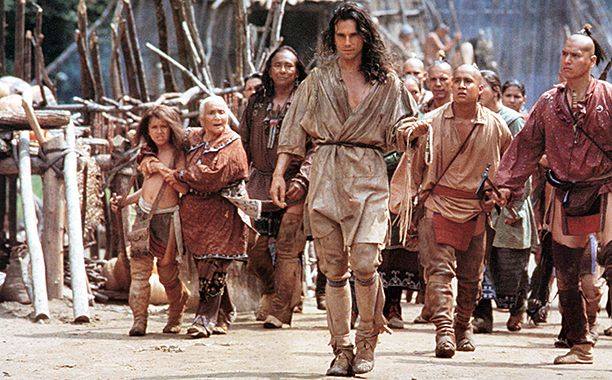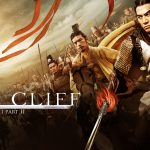The Last of the Mohicans (1992)

The Last of the Mohicans (1992), directed by Michael Mann, is a historical epic that combines romance, action, and drama against the backdrop of the American frontier during the French and Indian War. Based on James Fenimore Cooper’s classic novel of the same name, the film offers a visually stunning and emotionally compelling portrayal of the turbulent period in American history. This essay explores the film’s plot, character development, historical context, thematic elements, and its cultural impact.
Set in the mid-18th century during the French and Indian War, The Last of the Mohicans follows the story of Hawkeye (played by Daniel Day-Lewis), a white man raised by the Mohican tribe, and his journey amidst the conflict between British and French forces. The film begins with the backdrop of escalating tensions between the British and French empires, each seeking to expand their influence over the American colonies. The story unfolds through the personal and political struggles of its characters, focusing on themes of loyalty, love, and survival.
The central plot revolves around Hawkeye’s relationship with Cora Munro (played by Madeleine Stowe), the daughter of British Colonel Edmund Munro (played by Maurice Roëves). Cora and her sister, Alice (played by Jodhi May), are traveling with a British military escort to join their father at Fort William Henry. Hawkeye, along with his adoptive Mohican father Chingachgook (played by Russell Means) and his brother Uncas (played by Eric Schweig), becomes entangled in their journey as they attempt to protect the sisters from various threats.
The film’s narrative intensifies as the British forces are besieged by the French and their Native American allies, leading to the dramatic and tragic events surrounding the fall of Fort William Henry. Amidst the chaos, Hawkeye and Cora’s romance develops, revealing the personal sacrifices and heroism required to navigate the dangerous and complex world of the American frontier.

Daniel Day-Lewis’s portrayal of Hawkeye is one of the film’s most celebrated aspects. Day-Lewis brings a blend of rugged physicality and emotional depth to the role, creating a character who is both a skilled warrior and a compassionate individual. Hawkeye’s personal code of honor, his loyalty to the Mohican tribe, and his romance with Cora are portrayed with intensity and nuance, making him a compelling and memorable protagonist.
Madeleine Stowe’s performance as Cora Munro adds emotional complexity to the film. Cora is depicted as a strong-willed and intelligent woman who challenges the conventions of her time. Stowe’s portrayal highlights Cora’s inner strength and her growing affection for Hawkeye, emphasizing the theme of love transcending cultural and social boundaries.
Russell Means’s role as Chingachgook, the wise and noble leader of the Mohican tribe, is marked by gravitas and dignity. Means’s performance provides a sense of authenticity and respect for Native American culture, contributing to the film’s depiction of the Mohican’s perspective and their struggle to preserve their way of life.
Eric Schweig’s portrayal of Uncas, the brave and honorable son of Chingachgook, complements the film’s exploration of family and heritage. Uncas’s relationship with his father and his role as a warrior highlight the themes of legacy and sacrifice that permeate the film.

The Last of the Mohicans is set during the French and Indian War (1754-1763), a conflict between the British and French empires, with various Native American tribes involved on both sides. The film captures the historical tension and the complex interactions between European settlers and Native American tribes.
While the film takes creative liberties for dramatic effect, it provides a portrayal of the period that emphasizes the cultural and political struggles of the time. The depiction of the siege of Fort William Henry, based on historical events, adds authenticity to the film’s narrative, though some elements are dramatized for cinematic purposes.
The portrayal of Native American tribes, particularly the Mohicans, is handled with a degree of respect and accuracy, though some aspects are idealized. The film’s focus on the Mohican tribe’s perspective offers a more nuanced view of Native American experiences compared to traditional portrayals in historical films.

Several key themes are central to The Last of the Mohicans, including the clash of cultures, the struggle for survival, and the nature of heroism. The film explores the conflicts between European powers and Native American tribes, highlighting the impact of colonial expansion on indigenous cultures.
The theme of love transcending cultural boundaries is exemplified through Hawkeye and Cora’s relationship. Their romance serves as a metaphor for the possibility of understanding and unity amidst the broader conflict. The film emphasizes that personal connections can bridge cultural divides and bring about moments of genuine understanding.
The symbolism in the film is rich and multifaceted. The Mohican tribe represents the noble and vanishing aspects of indigenous culture, while the encroaching European powers symbolize the relentless forces of colonization and change. The natural landscape serves as both a beautiful and unforgiving backdrop, reflecting the characters’ struggles and the broader conflict.

The Last of the Mohicans received widespread acclaim for its sweeping cinematography, compelling performances, and stirring musical score by Trevor Jones and Randy Edelman. The film’s portrayal of the American frontier and its complex characters contributed to its status as a significant entry in the historical epic genre.
The film’s impact extends beyond its box office success, influencing the portrayal of Native American history and the American frontier in popular culture. The powerful performances and evocative storytelling have made The Last of the Mohicans a reference point for subsequent films and media exploring similar themes and historical periods.
The Last of the Mohicans (1992) is a visually stunning and emotionally resonant film that combines historical drama with powerful characterizations and thematic depth. Through its depiction of the French and Indian War, the film explores themes of love, cultural conflict, and survival, offering a nuanced portrayal of a tumultuous period in American history. Daniel Day-Lewis’s performance as Hawkeye, along with the film’s evocative cinematography and stirring score, contribute to its status as a notable and influential work in the genre. The Last of the Mohicans remains a compelling exploration of the clash of cultures and the enduring power of human connections amidst the challenges of history.










